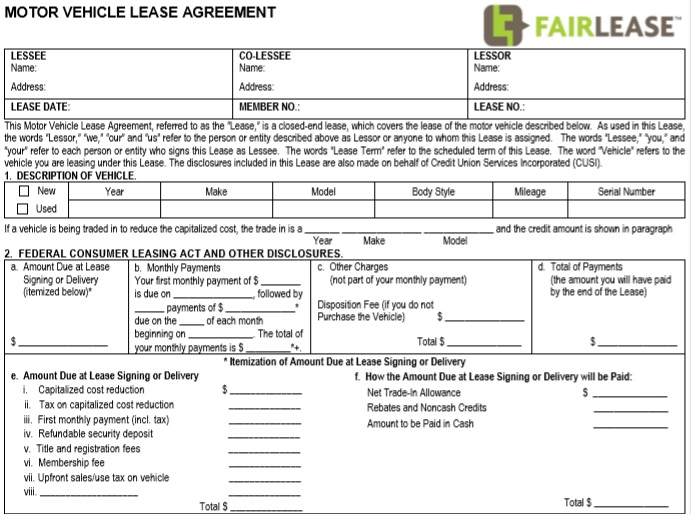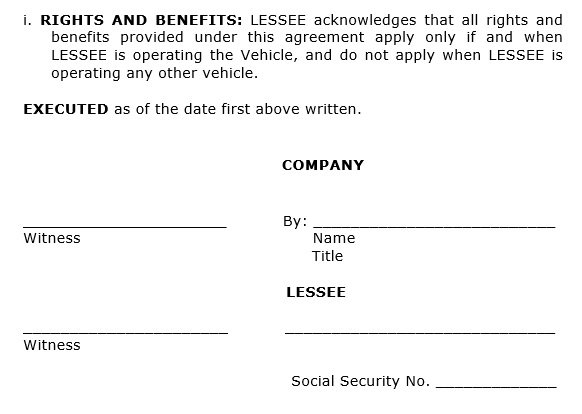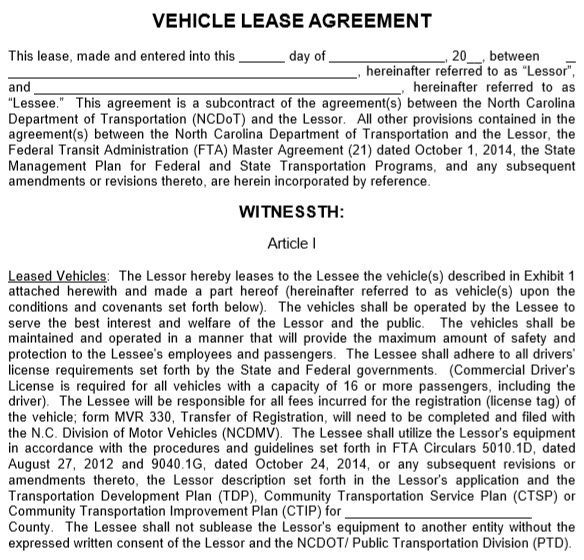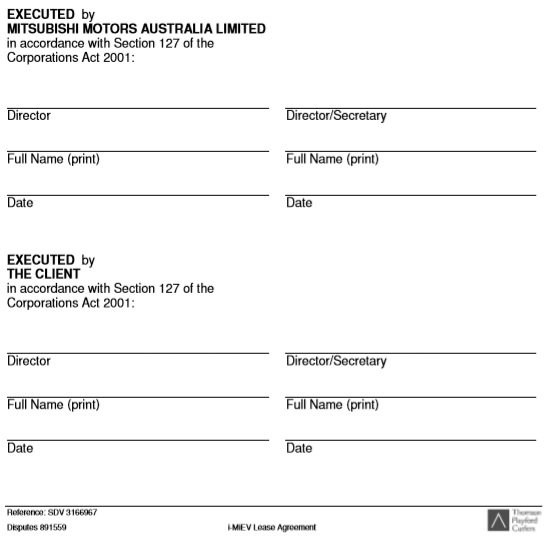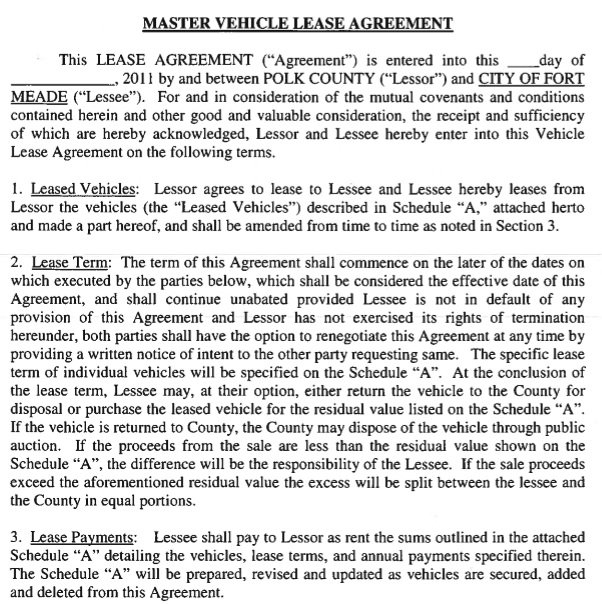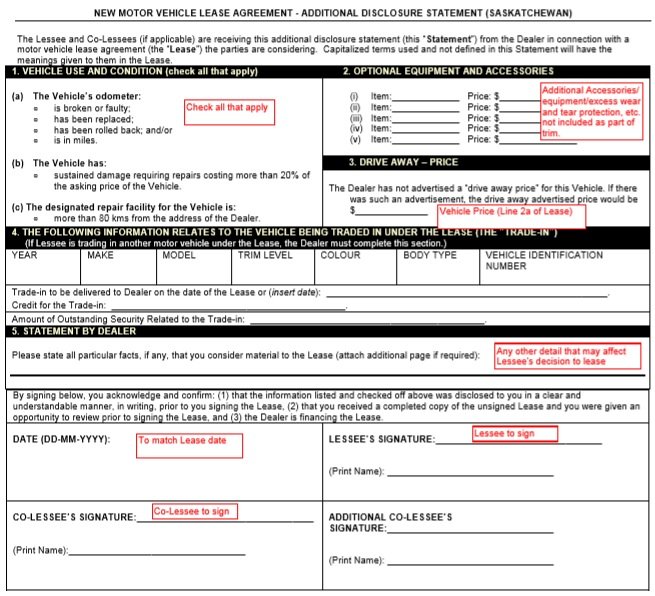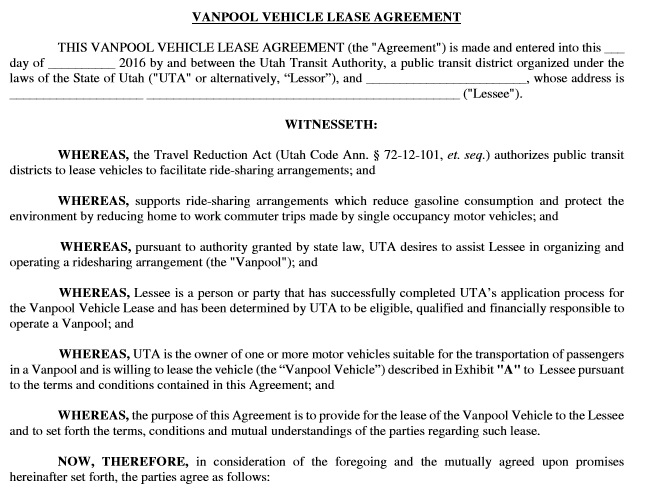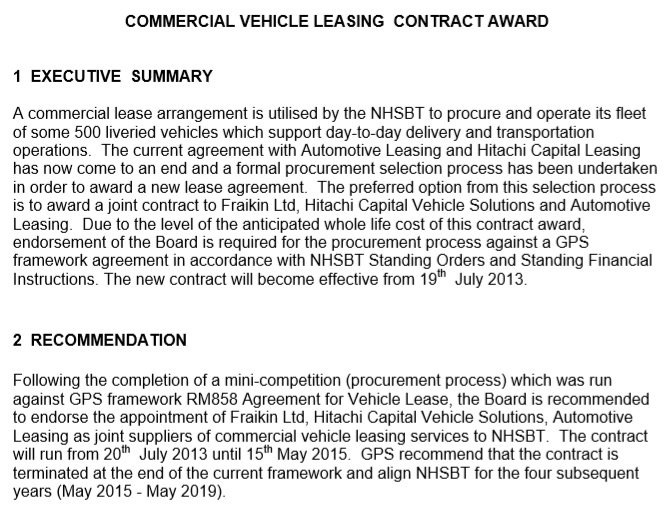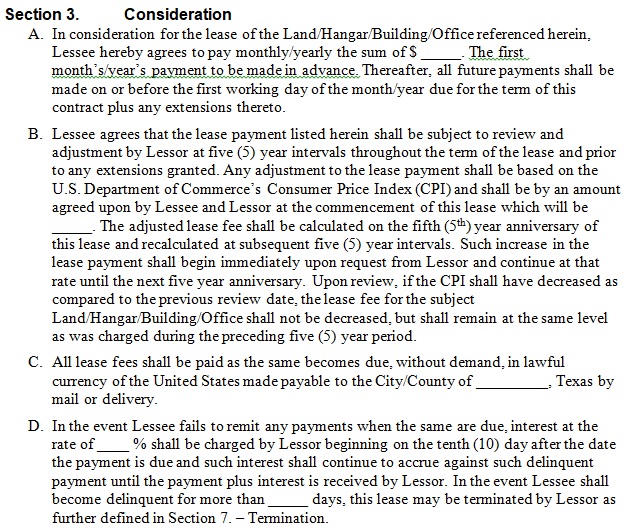A vehicle lease agreement template is used to draft an agreement between the lessee and the lessor. This document specifies the terms and rent payment details associated with an auto lease for a vehicle. Some other names of this agreement are;
- Car Lease Agreement
- Vehicle Lease Contract
- Motor Vehicle Lease Form
- Rent-to-Own Contract
What is a vehicle lease agreement?
A vehicle lease agreement is a legally binding document that records the terms and conditions of a vehicle lease. This agreement is signed by the lessor (a vehicle owner) and the lessee (a customer). The customer have to pay to use the vehicle temporarily for a certain period of time. Any motor vehicle that has a vehicle identification number and license plate can be leased with this agreement.
Key terms to include in a vehicle lease agreement:
Here are some key terms to include in a vehicle lease agreement;
- Monthly payment: it is the total amount that the lessee agreed to pay to the lessor every month.
- Lease term: time period of the lease agreement.
- Residual value: approximated value of the leased vehicle.
- Early termination: this term states that the lessor is allowed to end the agreement before the agreed end date.
- Mileage allowance: the number of miles the leased vehicle will be used during the agreement.
- Wear and tear: how often the vehicle’s routine wear and tear will be conducted.
- Security deposit: the specific amount of money that the lessee will pay to cover any potential damage and excessive wear and tear.
- Excess mileage fees: the amount to be charged by the lessee in case they exceed the agreed mileage allowance.
How to create a vehicle lease agreement?
Here are the steps to create a vehicle lease agreement;
Specify whether the vehicle is for personal or business use
First, you should state whether the lessee requires the vehicle for personal use or business purposes. If you don’t have any idea about this then think about why the renter requires the vehicle.
It is for business use in case they are using the vehicle as part of their occupation. On the other hand, it is for personal use if they are using it for everyday things that aren’t relevant to their job.
Mention your state
It is important to mention the state in which you live in the vehicle lease agreement.
Provide the details of the lessor and lessee
The agreement should contain the following details about the lessor and lessee;
- Complete names
- Addresses
- State whether they are an individual or an organization
Explain the vehicle
Provide descriptive details about the vehicle so that you know which vehicle is being leased. Include the following about the vehicle;
- Color
- Make
- Model
- Year
- Body type
- Vehicle Identification Number (VIN)
- New or used
Specify the details of the lease
State in your vehicle leasing agreement a specific amount of time the renter is leasing the vehicle. Also, clearly specify whether there is a limit on the number of miles per year or not. The annual rate of interest which is charged by the lessor on the total lease payment should also be included. It is also known as the lease rate.
Furthermore, it’s up to you to include in the agreement an option to purchase the vehicle. This option allows the lessee either to buy the vehicle during the lease or at the end of the lease.
State the lease costs and fees
The agreement needs to include the following in order to calculate the total cost of the lease;
- The full retail value of the vehicle
- The residual value of the vehicle
- Over the lease term, the amount to be amortized
- Security deposit
Indicate the monthly payments
It is essential to specify the details about the monthly payments in your agreement. Identify the sales tax and whether the lessee can make pre-authorized payments. Also, state when the first payment is due and the late fee charges.
Mention if there is an option for early lease termination
Decide if the lease is terminated early then the lessee is responsible for the difference between the residual value and the realized value. The estimated value of the vehicle at the end of the lease term is the residual value. While the realized value refers to the actual sale price the owner gets for the vehicle when the lease is terminated early by the renter.
However, if the lease is terminated at the end of the lease term then the lessee is not responsible for the difference between the residual value and the realized value.
Outline any warranties
There are two types of warranties that can be applied to the lease;
- The manufacturer’s warranty: this type of warranty comes along with the original purchase of a vehicle. You should also state how many years of coverage remain in case there is a warranty left on the vehicle.
- The supplementary warranty: the owner or a third party provides this type of warranty for repairs. It covers a specific amount of time between when the manufacturer’s warranty expires and the end of the lease term.
Outline insurance and deductibles
You should outline the following in your vehicle lease agreement;
- Maximum insurance coverage
- On fire and theft insurance, the maximum deductible
- On collision coverage, the maximum deductible
- Gap coverage
Include additional clauses and sign the agreement
Include any terms or unique issues that haven’t been addressed in your agreement as additional clauses. Both the lessor and the lessee have to sign the agreement in order to make it legally binding.
Use and purpose of car lease agreement:
Such an agreement has many uses. For car owners, car lease agreements are the most necessary thing. They make or get this agreement when they want their car to be used for rental purposes. The car owner can get the opportunity to earn some money by using car lease agreements. In addition to this, for travelling purposes, people can get cars to lease.
When does an individual require car lease agreements?
A person needs a car lease agreement when they own a car that they are not being able to use for some reason and want to use the car for rental purposes. This agreement is made between him/her and the person who wants to lease the car for travelling purposes. This makes sure safe and sound understanding among the car owner and the car leaser.
Benefits of car lease agreements:
The car lease agreement has various benefits and uses. Carrying a list of rules and regulations that are to be followed by both the car owner and the car leaser is the biggest advantage of the use of a car lease agreement. This makes sure the safety of the understanding between both the car lease agreement users and the car.
At the end of the vehicle lease term, what happens?
The lessee must return the vehicle to the lessor when the lease is over. Without excessive interior wear, damage, and significant mechanical breakage, the vehicle must be in good condition otherwise the lessee will have to pay for the repairs. Furthermore, the lessor is allowed to provide the lessee to buy the vehicle.
The lease payments are included in the total purchase price in case the lessee agrees to do it. You may be subject to early termination penalties if you select to end the lease before its term is up. These may include to pay the rest of the lease payments with additional fees and charges.
Some helpful tips for using car lease agreements:
The owner of the car and the person who wants to lease the car while getting car lease agreements made should ensure that all the rules mentioned on the agreement paper are agreed in front of someone else (third person). Doing so is important so that at any point none of the two car lease agreement users may defy the other.
You can find the car lease agreement easily in the internet. All these templates have text-editable and customizable car lease agreements. This enables their users to make any desired amendments whenever and wherever needed.
Why should you use a car lease agreement?
With the help of a car lease agreement, the interests of the lessor and lessee get protected. The risk of misunderstandings or miscommunications between the two parties reduces by having the terms of the agreement documented. Whenever a vehicle lease is being negotiated between two parties, using a car lease agreement is a good idea.
The advantages of leasing a vehicle:
Here are the advantages of leasing a vehicle;
- You can get a newer vehicle for lower monthly payments as compared to buying the vehicle outright.
- You can simply return the vehicle to the dealership once the lease is up. Thus, you don’t have to think about the vehicle’s value depreciating over time.
- It also provides you a chance to drive a higher-end vehicle that you can’t afford.
Faqs (Frequently Asked Questions)
1- Personal car owners
2- Rental service companies
3- Small business owners
4- Car dealerships
Under state law, a car lease agreement is considered legally binding when all involved parties affix their signatures on it.

